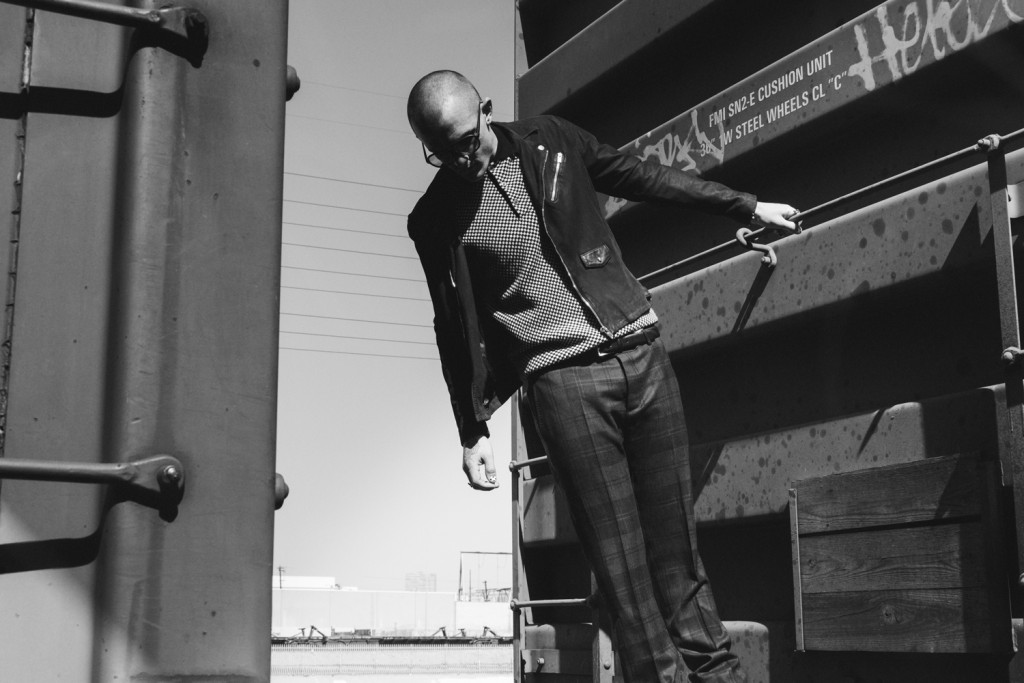
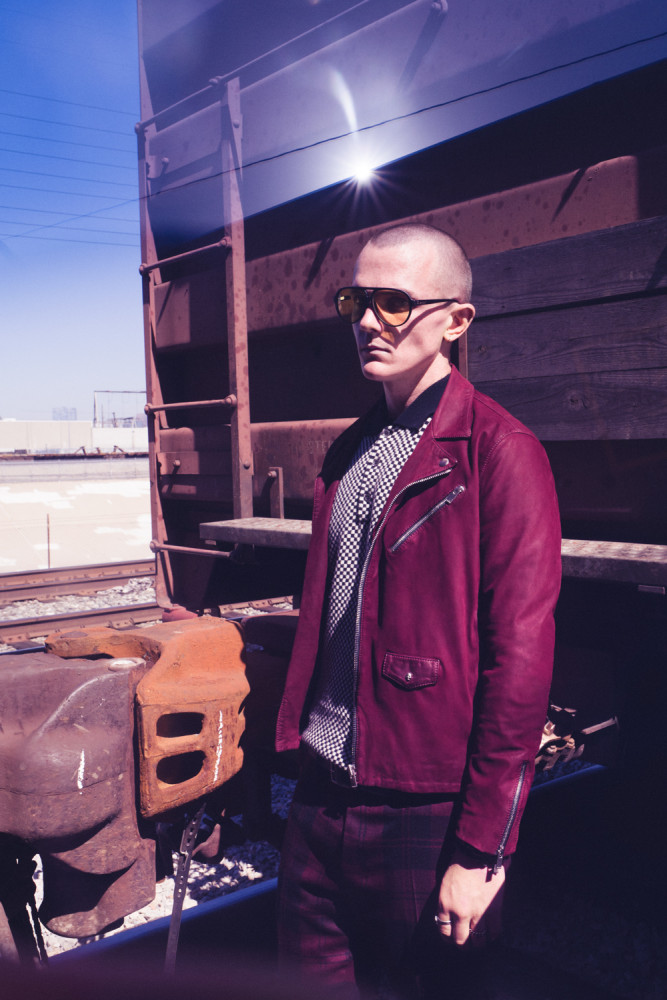
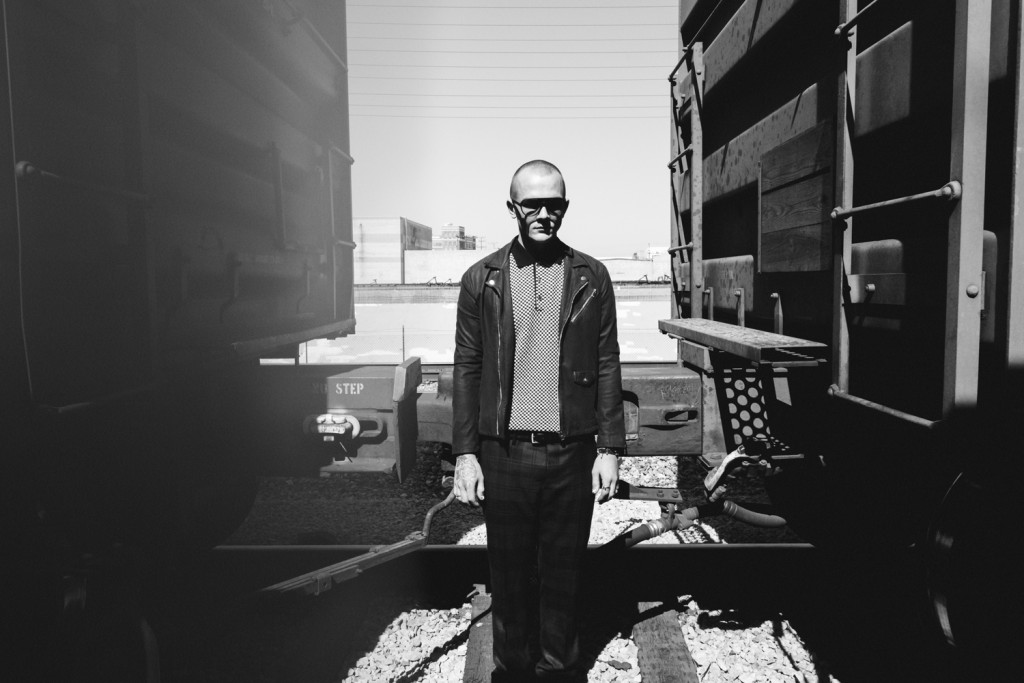
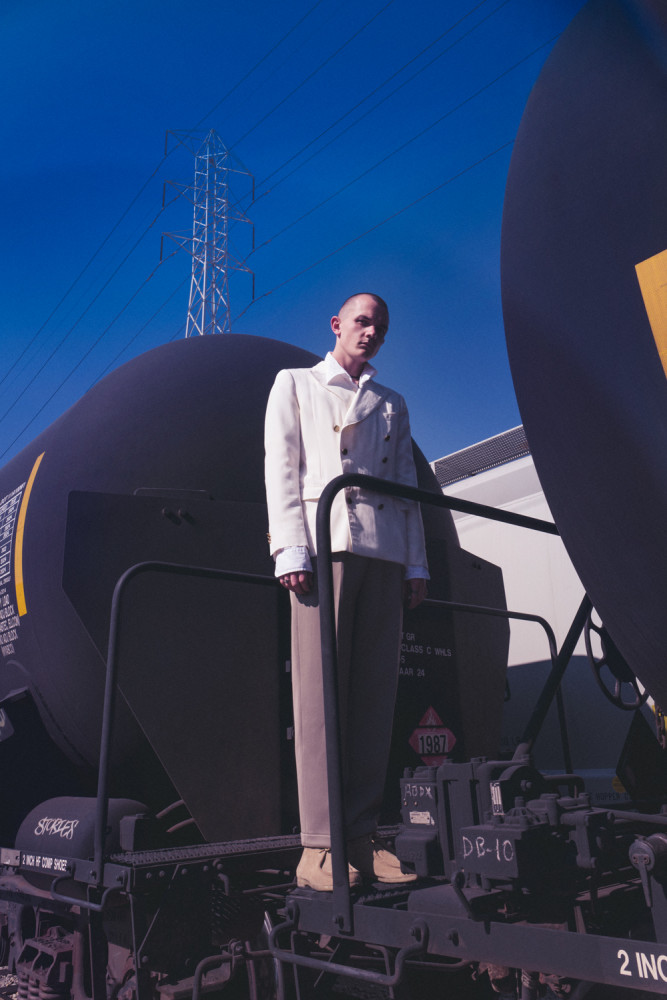
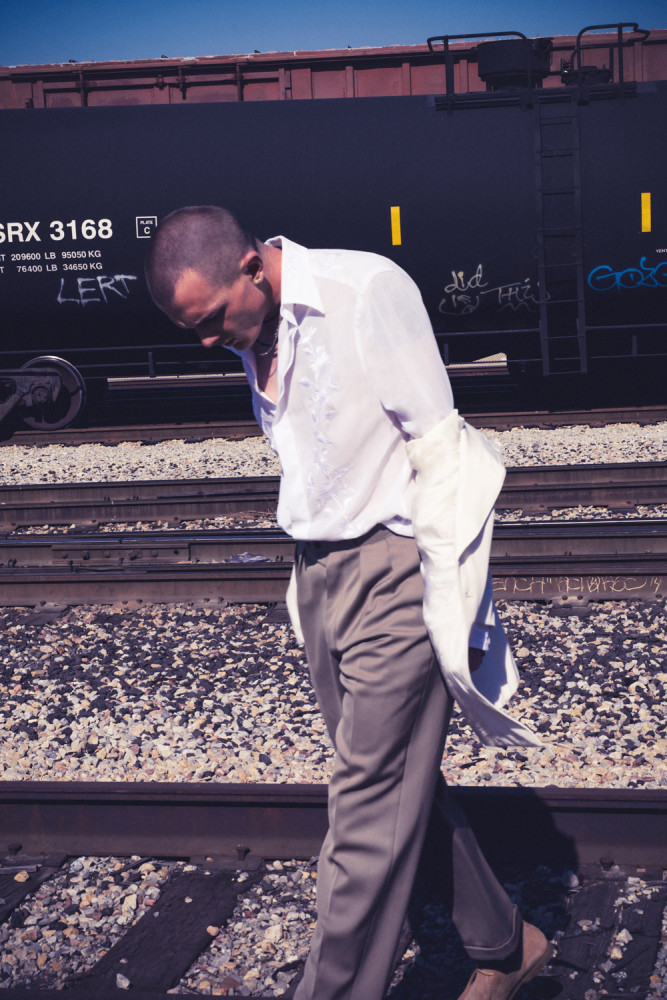
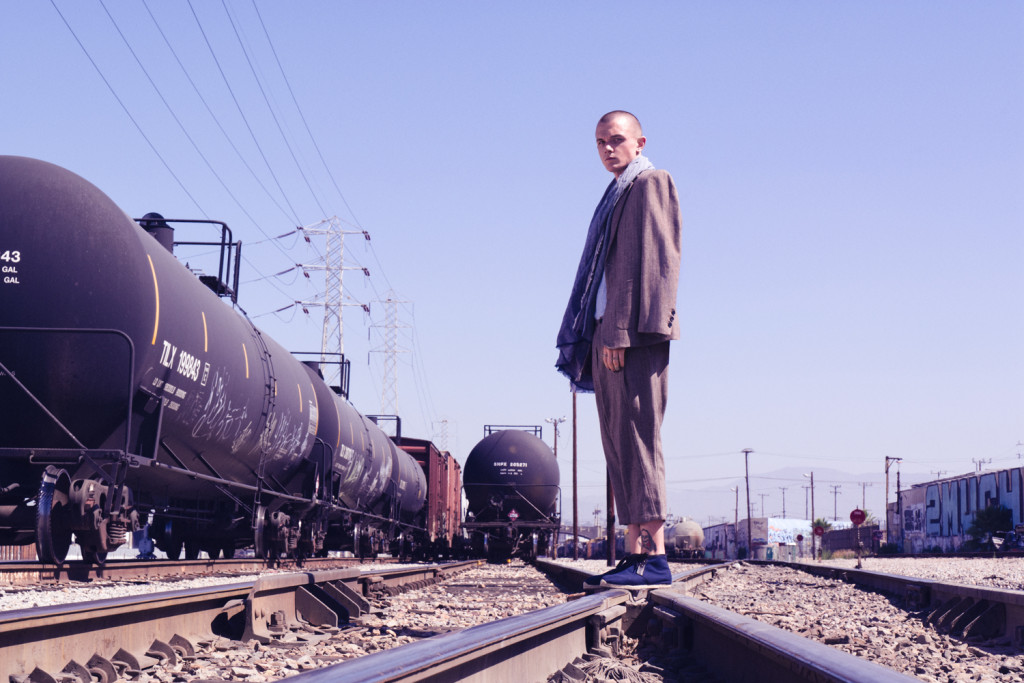
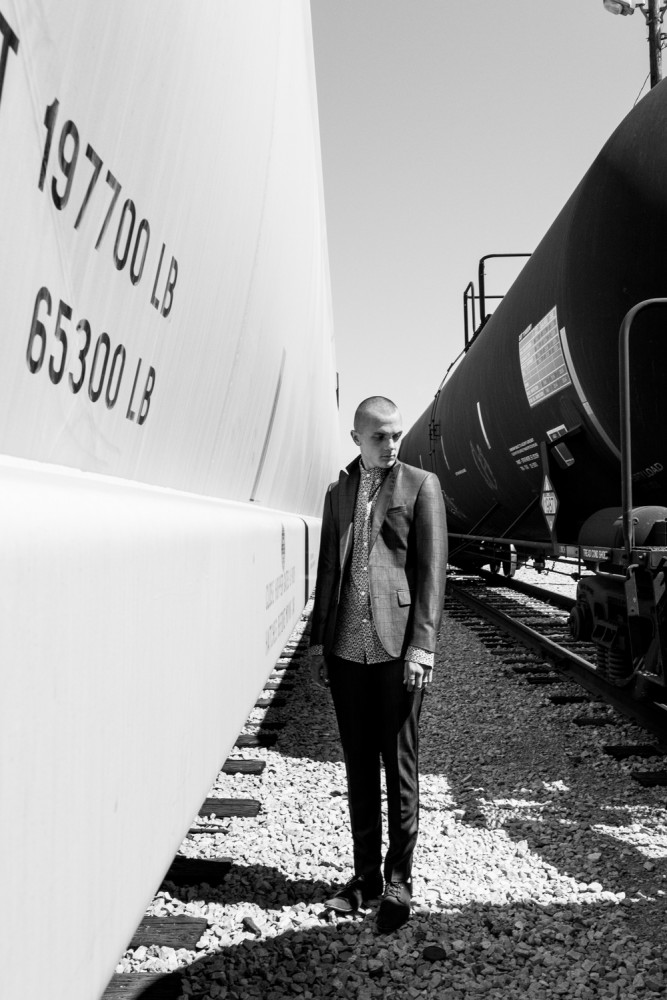
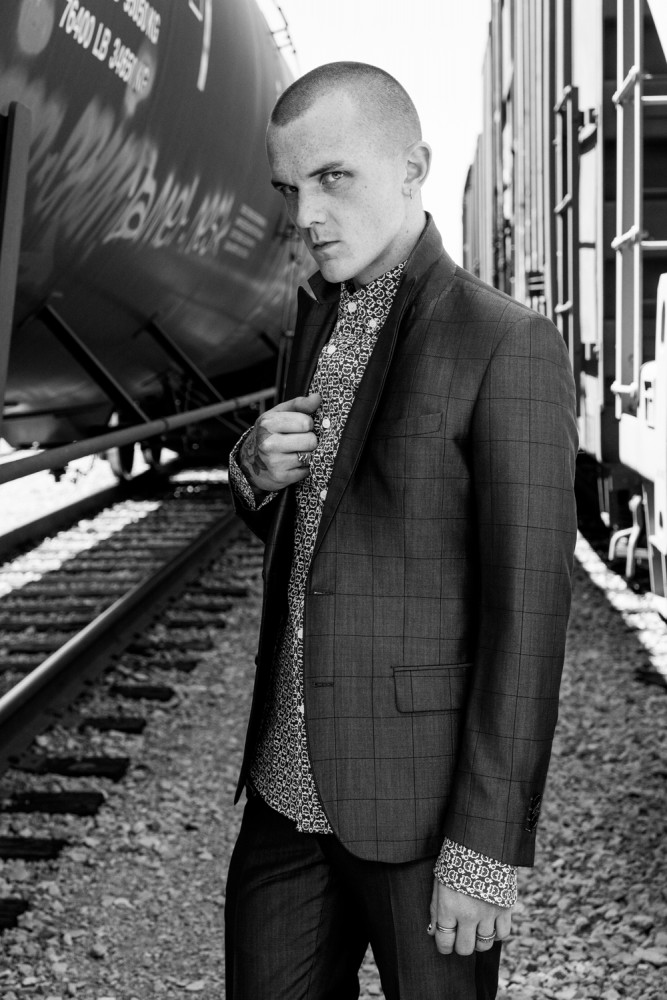
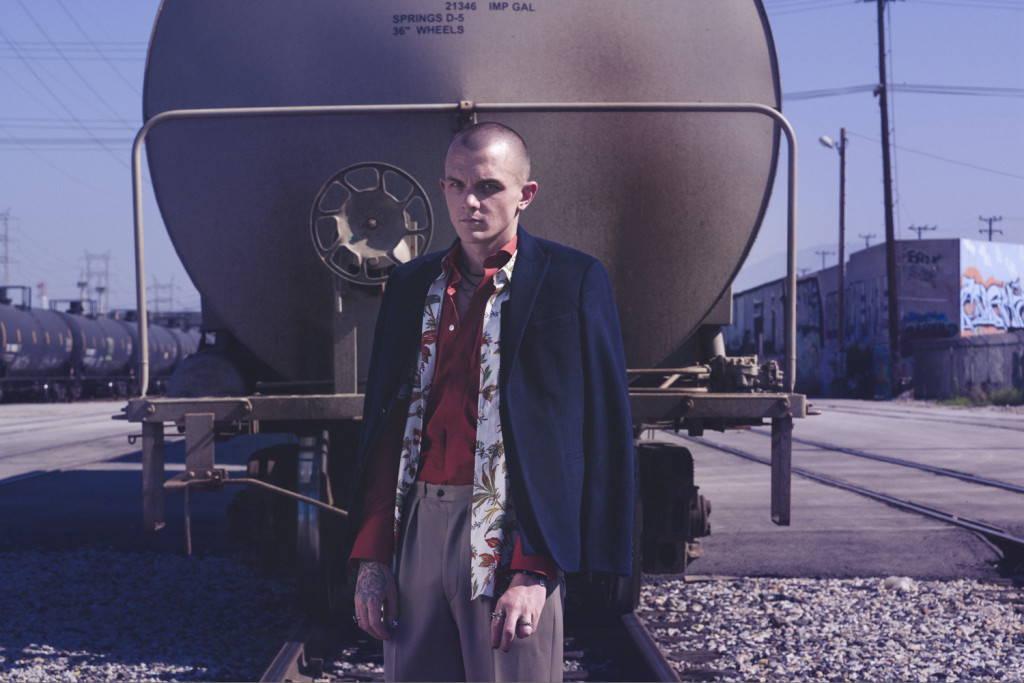
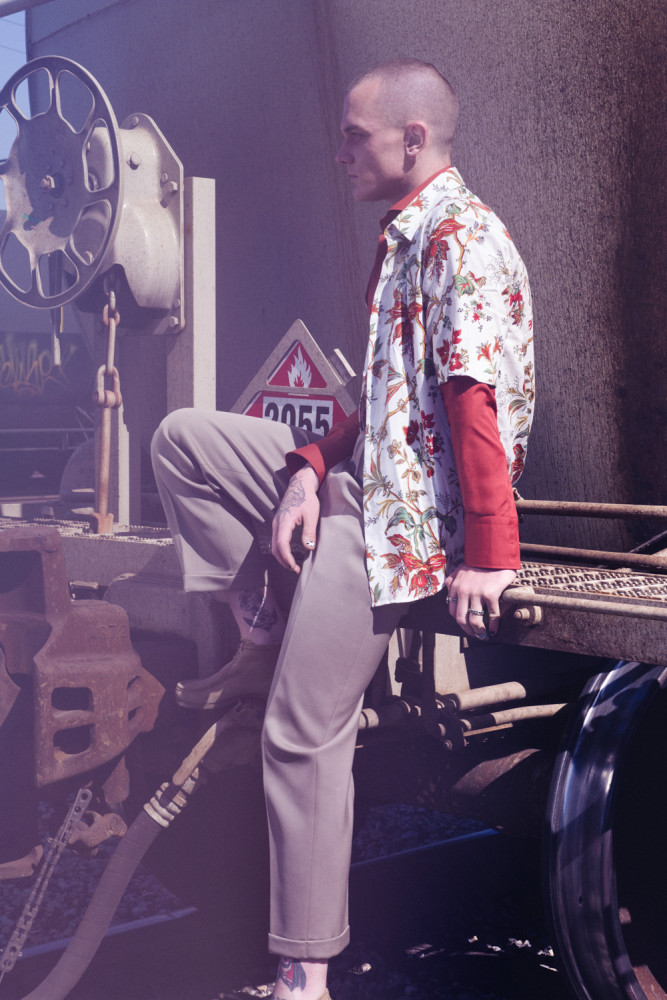
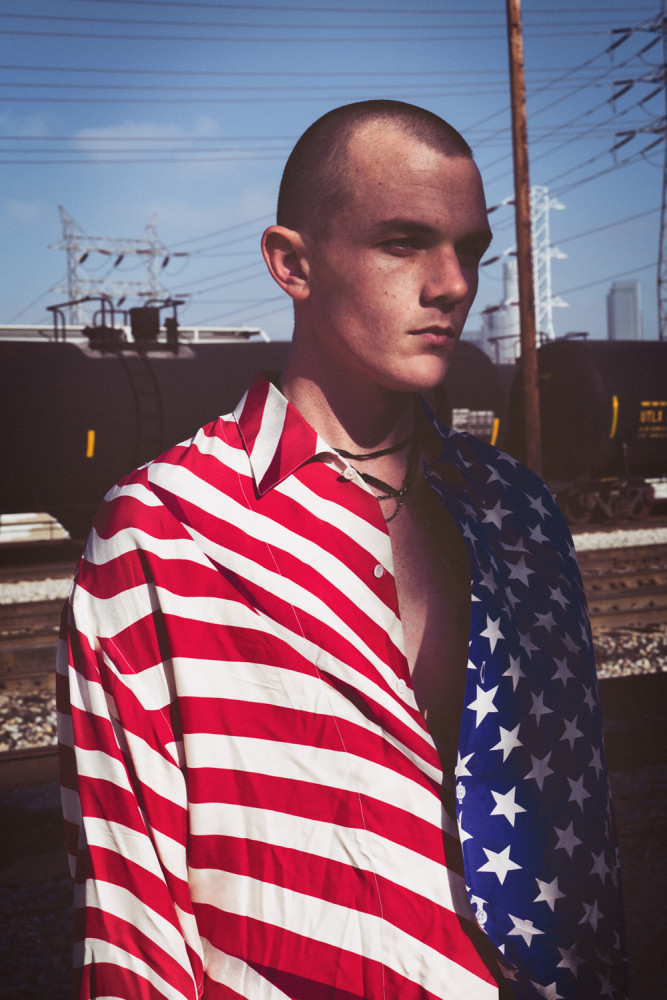
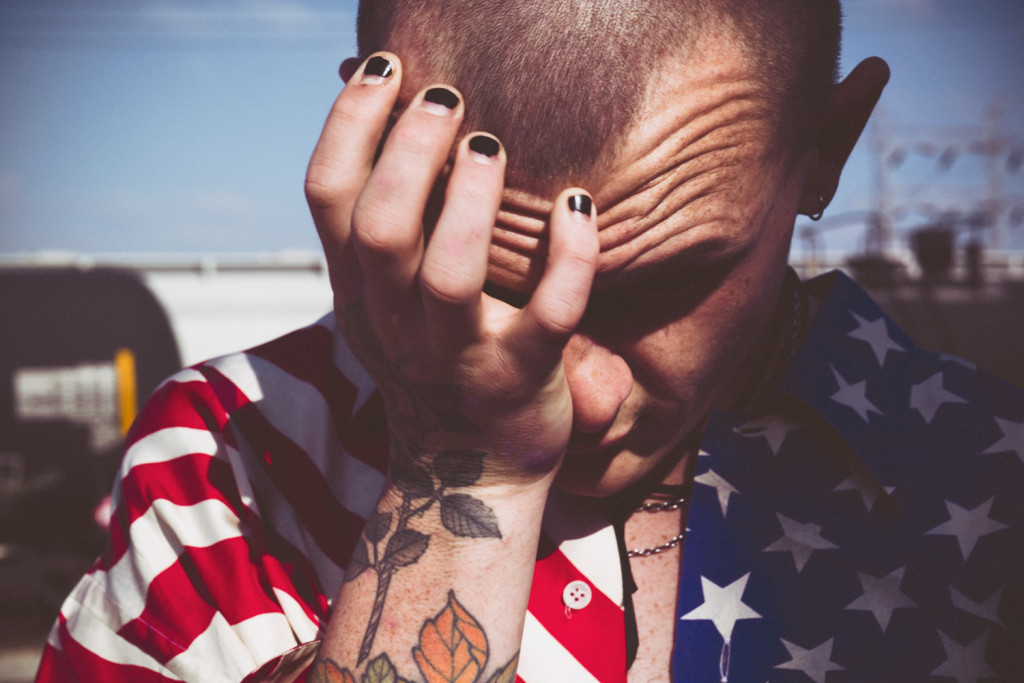
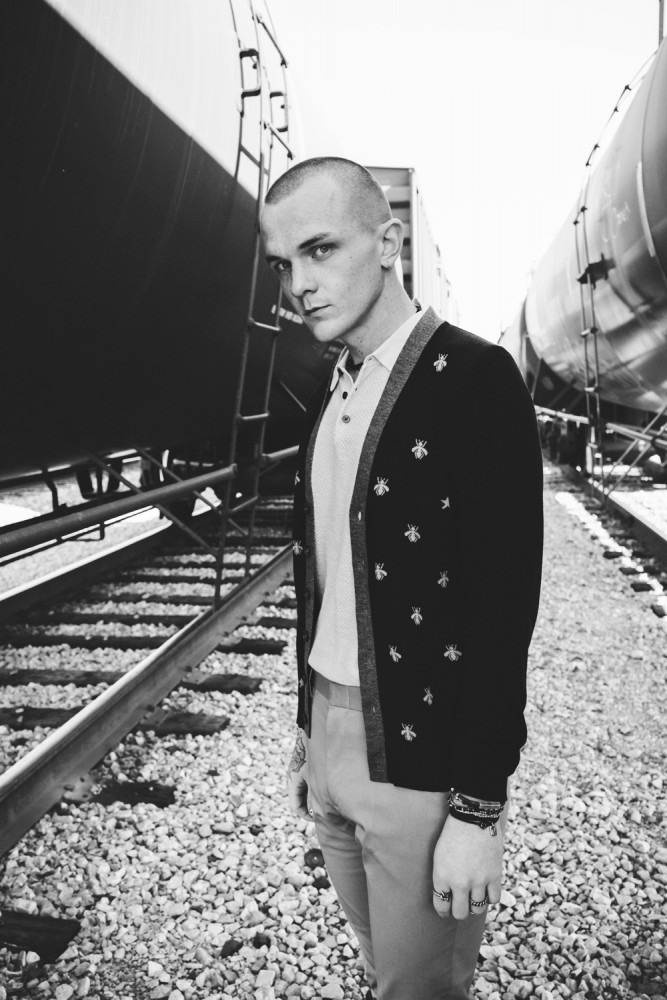
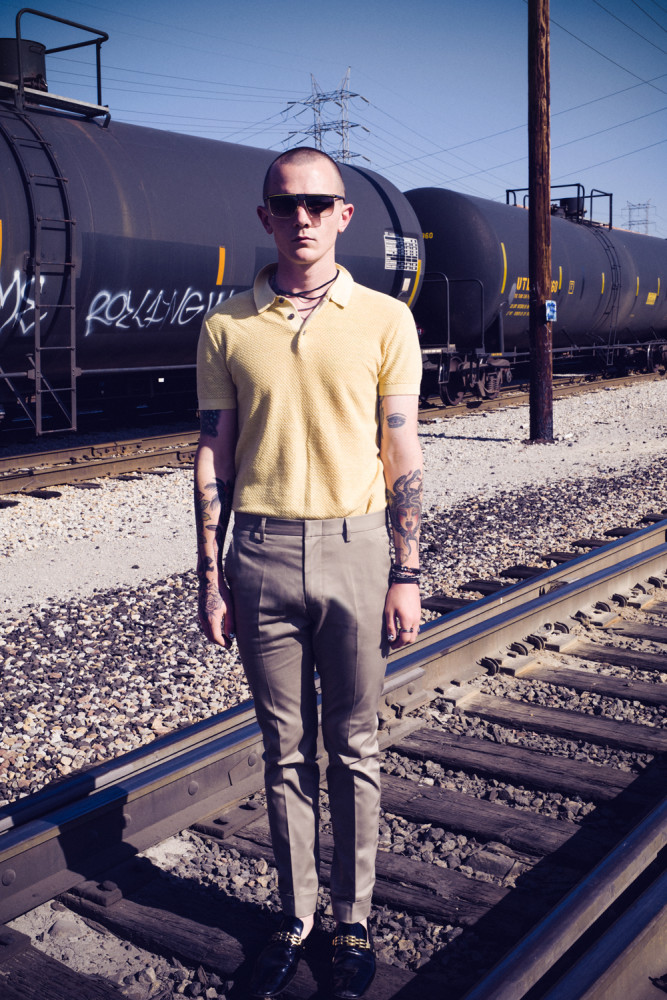
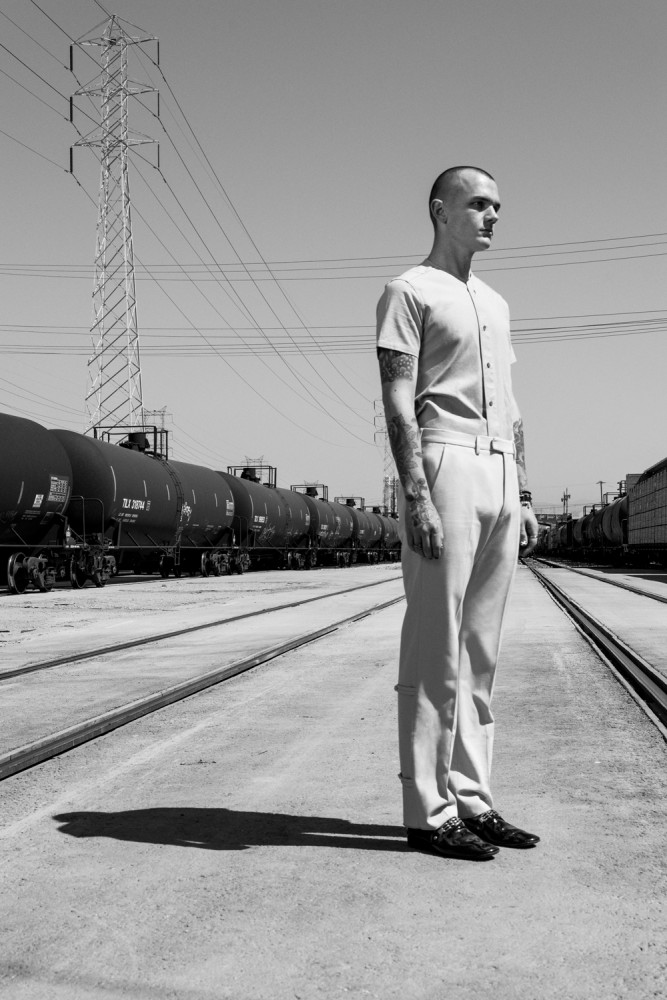
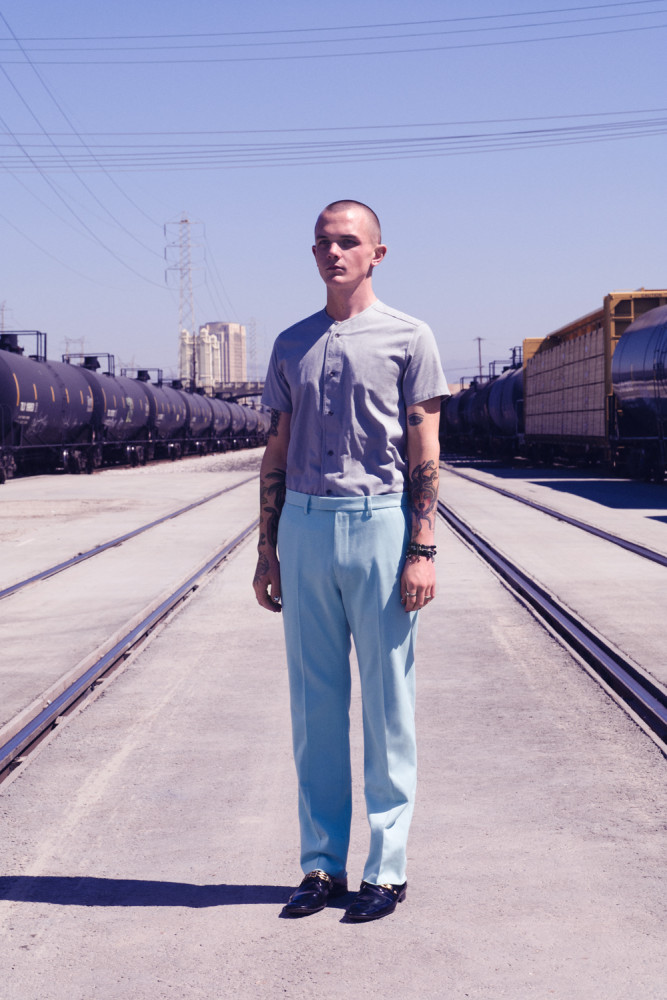
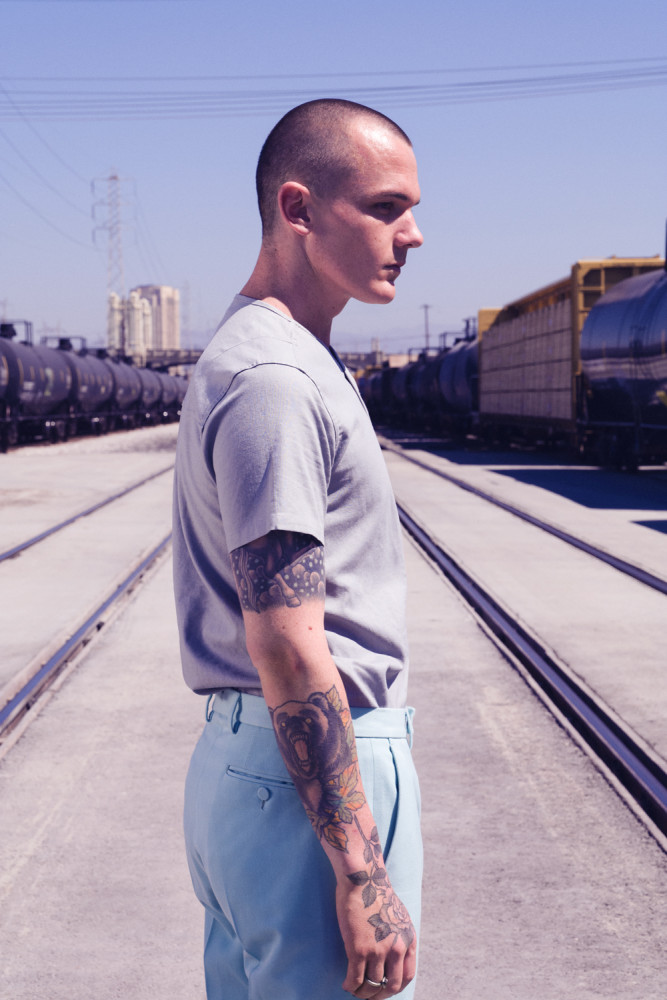


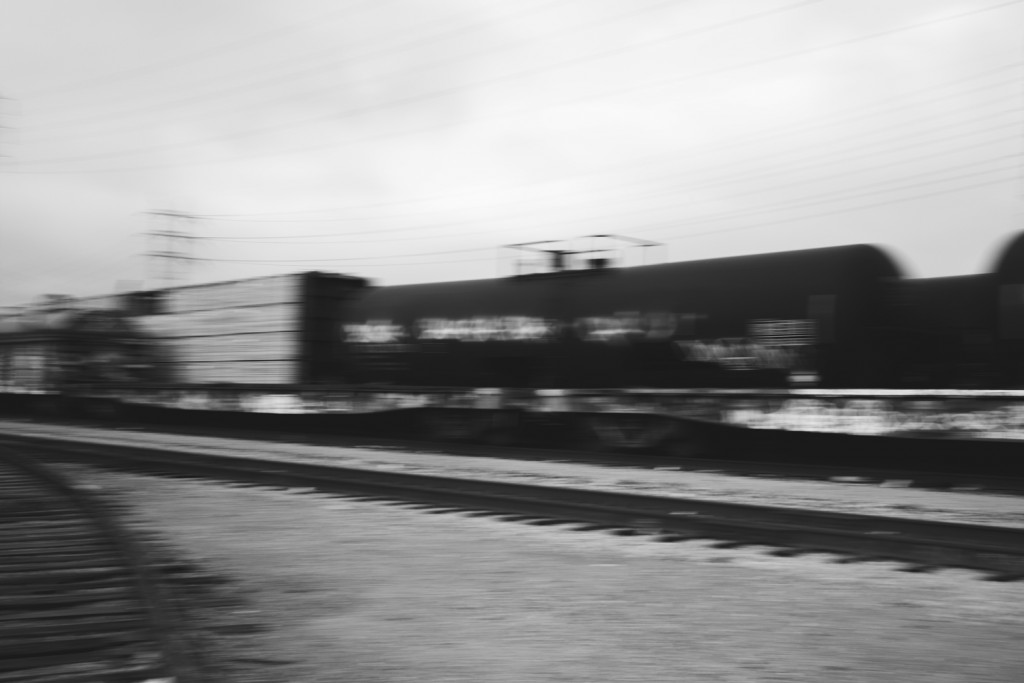




















INTERVIEW
Jana Cruder
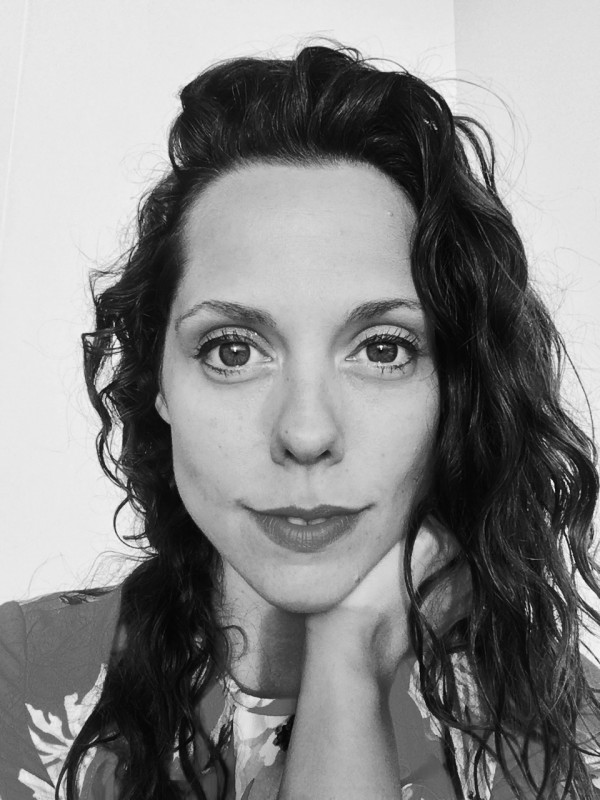
PHOTOGRAPHY Jana Cruder STYLING Kimmy Erin MODEL Clinton Van Arnam @ Photogenics Los Angeles RETOUCHING Chiara Merico CAMERA Leica SL (Typ 601) with Vario-Elmarit-SL 24–90mm f/2,8-4 Asph.
With ‘Lucky Hobo’, Jana Cruder produced a nostalgic, vintage story where Clinton Van Arnam, with a very personal attitude, steps into the world of trains and locomotives in search of his own, real identity.
You’re not only a fashion photographer, but also a film maker, fine-art photographer, creative director and installation sculpture. What led you to focus of so many things?
I love fashion, I love the art of it, I love watching light fall across the face of a model and seeing a crisp crease in a uniquely textured hemline. I love how fashion can be used to tell stories, to show possibilities and to share messages of a world not so far from this one. For me, two years ago I had a moment with my fashion career where I realized I was heartbroken over the industry itself and my role within it. I realized the impact fast fashion had on people and the planet. From there I started shifting my approach to it and thus shifting the clients and stories I was telling. Reserving fashion shooting and creating for the art of it, or in alignment with using fashion as a vehicle for change and allowing that to generate new opportunities. I shifted out of the fast fashion E-comm world, and more into editorial, aligning with brands’ eco or sustainable fashion efforts and creating fashion films. Using fashion as a medium to bring larger conversations to the forefront of the mainstream. My understanding of creativity is that it’s a channel, an energy, and those who are attuned to it are like antennas that pick up on signals. Ideas want to be created and seek a channel to come through; it’s an energy that must be sparked and then, with discernment, followed. Artists are channels. The diversification of my work is tri-fold. Firstly it is a sign of the times, with a need to diversify to continue to create professionally. Secondly, I’ve been opening up to the excitement I feel in evolving into more of a director role and allowing my creative interests to expand with the accessibility of storytelling via technology. Thirdly, I think it is a natural evolution of a photographer, maturing more in his or her craft, to start to explore multiple forms of expression. I also think this expanding creativity is both a blessing and a curse. The commercial world wants to clearly define creativity and assign a $ sign to it so it can be bought and sold. While the creative energy itself doesn’t actually follow that model. I do feel, however, that there is an openness emerging in the fields of visual arts, and that clients and companies are shifting into more versatile approaches to creative solutions.
Why do you separate the commercial work that includes the fashion series, celebrities and fashion videos, from the fine-art work and installations that you exhibit in galleries, for example? In this regard you have two different homepages: why do you do that?
It is interesting that you bring that up. In seeking new representation I’m working on JANA 3.0 where I’m bringing that all together onto one website to be launched in 2018. Realizing that, in the combination of my art, editorial approach and commercial sensibility, it is ultimately the client and projects I wish to attract. I think it’s actually also a sign of the times as well that people are becoming more accepting of diversification and multiple interests in professions. It use to be if you wanted a car photographed you only went to a car photographer, but now agencies are getting more creative and trying new things using fine art photographers, and fashion-sensitive shooters to create for traditional and emerging media. Marketing and advertising is also shifting to be more experimental, and creating experiences around a brand or product is interesting to me. I see the connection and how it’s coming full circle, bridging my fine art and commercial sides. It’s an interesting combination and shift in creative opportunities. For a while I was told by photo reps and ad agency buyers, that I would turn off advertisers wanting to collaborate if I shared my fine-art side. I was also advised by gallery curators and my fine art dealer, who suggested that I would turn off potential fine-art collectors if they saw my commercial work, possibly thinking I wasn’t fully dedicated to my fine-art practice. So I had multiple personas I had been maintaining, and this is all becoming clearer, and ultimately owning it as my own definition. At this point, it’s all my ART. Whether I’m collaborating on a piece for a installation, directing a music video, creating a new fine-art series, capturing a portrait of a celebrity or shooting a fashion line, it’s all me. That is a place and space I’m coming to internally, and I’m looking forward to bringing that together and more to the forefront by combining my sites. Moving to focus on collaboration with people who want to work with me, create with me and are passionate about supporting projects that align.
How do your stories come about? Where do you get your ideas and what creed do they have in common?
I find inspiration in so many different things, but the main draws are always locations, color and light. I also love remnants of vintage and times passed. I’m always working an element of nostalgia into my work, whether it‘s wardrobe, visual treatment, location or story. I’m starting to see an over-arching thread in my work, all of my work. That thread is an emotional tie in bringing an emotion to the surface, glimpses into a scene or a feeling that wants to be expressed. I’m really into exploring light and dark, contrast and shadow and where light can lead the eye in an image. I like to hint at deeper questions that we all have, where are we going, where are we going, and how are we getting there. I believe art can open that space for exploration.
You chose Clinton Van Arnam, who represents a certain type, to model for the S Magazine. What’s the story you’re telling in ‘Lucky Hobo’?
This story was inspired by a book I recently read called ‘Hobo’ by Eddy Joe Cotton. Cotton, shared his stories of riding the rails as a young twenty something man in the 90s. I was enraptured by the idea of what it was like to live so freely, as well as captured by the stories of the characters he met along the way. I wanted to explore the idea of this freedom, the search for one’s own identity in a non-traditional quest for man-hood, and I used this fashion piece as a platform to start asking those questions. It is first and foremost a fashion story, and the inspiration to start to explore life on the tracks that the book led me to, was exciting and new. I was drawn to Clinton, because he’s purely himself, with an “I don’t give a fuck” attitude. He is not a “traditional” fashion model, as he’s a little rough around the edges, but that’s exactly what I wanted. I wanted to see what would happen when I put him in some mix-up of high-low fashion mixed with vintage and gave him the essence to start exploring the emotional space of solitude and journey along the rails. The tracks provided a really beautiful and enigmatic backdrop to explore Clinton and the concept of a man searching for his identity.
What role does the choice of location play for you? Why did you choose old trains and locomotives for ‘Lucky Hobo’?
As this piece was inspired by the life and travels of Eddy Joe Cotton, it absolutely needed to be in a train yard. Location is everything to me: when I get the chance to shoot on location it’s pure excitement. I scouted this location and discovered the light was best at sunrise. With the shadows raking through the yard creating pools of light and darkness to play in. I love locations, they often inspire and spark a whole shoot. This is one of LA’s downtown train yards, which I chose for its proximity but also its easy access. No one bothers you down there, as long as you look both ways and don’t stir up any issues, they are best to leave you be.
How did you find working on a fashion spread where you were free of any influence? Do you also have that kind of freedom when working on commercial assignments?
I loved it. It’s rare in this profession to be able to be so free in our creations. I really appreciated and loved the openess of the assignment. Basically: here’s a Leica go make something you love!
I needed that. Sometimes, I get that freedom when working commercially and it depends on what I’m working on and how much the client trusts me to creatively direct the end product. It also depends on the concept that was sold to the client, and if I’m being commissioned to create my vision or to work together with them to mix their vision through my lens. It all depends, and I love both approaches to creating work.
How did you manage with the Leica SL? Is it a camera you would use again on location?
I loved shooting with this camera. It is very different from my usual EOS SLR. It took a minute to get use to but I simply can’t deny the edge the images have. It’s something I’ve been searching for in my work. The lens is remarkable!!! The files are stunning!
What do you plan to so next?
I plan to continue evolving my fashion and commercial work, shooting stills and directing motion pieces. I’m aiming to align with companies and brands that have a bigger message to share about supporting a positive shift in humanity though sustainability or giving back. It’s exciting, because right now there are a few film projects in the mix. I just wrapped up my first short film, The Plastic Man, and we’re entering it into festivals. Also I’ve started discussions with a screenwriter and Eddy Joe Cotton to turn HOBO into film. Directing it as a feature or an episodic. We’re currently in the writing and pitching phase of that project, so it’s something I’m looking forward to digging into. On the fine-art side, I’m hoping to install my piece Way of The Modern Man at 2018 SXSW. I’m awaiting news about that.